Gymnocalycium spegazzinii Vg 360 rare cactus
₹1,399.00
Out of stock
Email when stock available
Gymnocalycium spegazzinii Vg 360 Origin and Habitat: North Argentina on hight altitude (from south-west of Salta to North-east of Catamarca, north-west of Tucuman and Cordoba) and in Bolivia.
Altitude: 1300 to 3600 metres above sea level.
Habitat: This cactus grows on rather rich and water-absorbing sandy, gravelly and rocky terrains among scrubs of Trichocereus terschekii and sometimes of Cleistocactus sp. predominantly on plain ‘meadows’ rather than slopes, though without a trace of grass. In the same area it is possible to find other cactus and succulent species like: Parodia rubellihamata, Acanthocalycium thionanthum, Parodia spanisa, Trichocereus pasacana and bromeliads. This species is scarce in several locations, but in others it is abundant. The major threat is the expansion of agricultural land and cattle ranching, the animals eat and trample on the plants. Illegal collection poses a threat to a lesser extent.
Gymnocalycium spegazzinii Vg 360 Description: Gymnocalycium spegazzinii is a flattened solitary cactus with very characteristic spines pointing sideways or downward. Two subspecies are recognized, the nominate form and subsp. cardenasianum (F.Ritter) R.Kiesling & Metzing.
Stem: Noticeably flatten, in nature it is partially underground, greyish-green, brownish-grey to almost black up to 18 cm (or more) in diameter, 6 cm tall (up to 10 cm tall in cultivation). Apex depressed an woolly. Will not offset.
Ribs: 10-33 (usually about 13-15) broad an low, evenly subdivided in confluent rounded tubercle, not chinned. Transversal grooves rudimentary or absent.
Areoles: Elongate 8-10 x 4-6 mm yellowish or greyish.
Central spine: Absent.
Radial spines: 5-7(-9) strong, subulate, +/- flattened, 25-55 mm long, typically recurved, and add-pressed against the body and most attractive, the young spines are yellowish or blackish and become brownish-grey as they ages.
Flowers: Infundibuliform on the plant apex 70 mm long, 50 mm in diameter. Outer tepals spatulated whitish or pinkish with a glaucous green midrib. Inner tepals smaller, lanceolated white with a pink midrib and basally crimson coloured (red throated). Filament crimson or violet, anthers pale-yellow, style white to violet-pink, stigma with 10-16 white to rose-coloured lobes. Scales on the ovary few and broad.
Blooming season: Flowers are produced in late spring and remain open for up to twelve days.
Fruits: Elonged up to 35 mm long, green covered with bluish pruine.
Seeds: Of the microsemineum type +/- 0.9 mm.
Be the first to review “Gymnocalycium spegazzinii Vg 360 rare cactus” Cancel reply
You must be logged in to post a review.





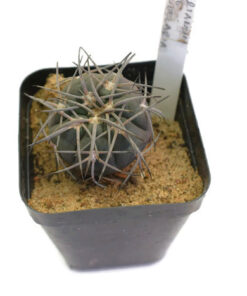

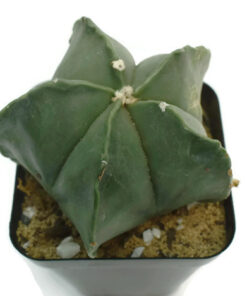

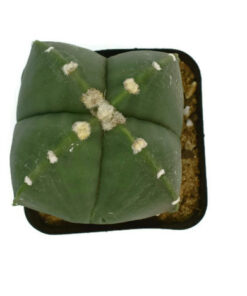



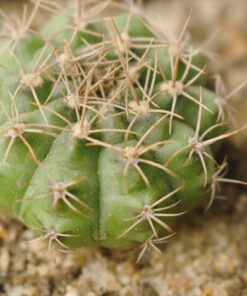

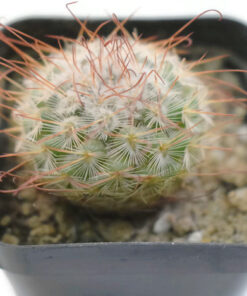



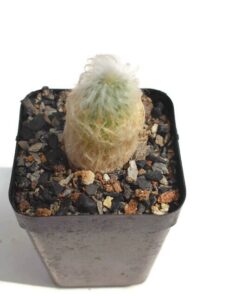

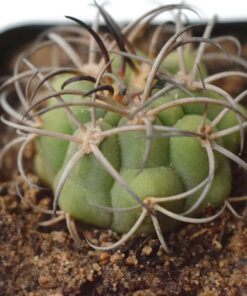

Reviews
There are no reviews yet.